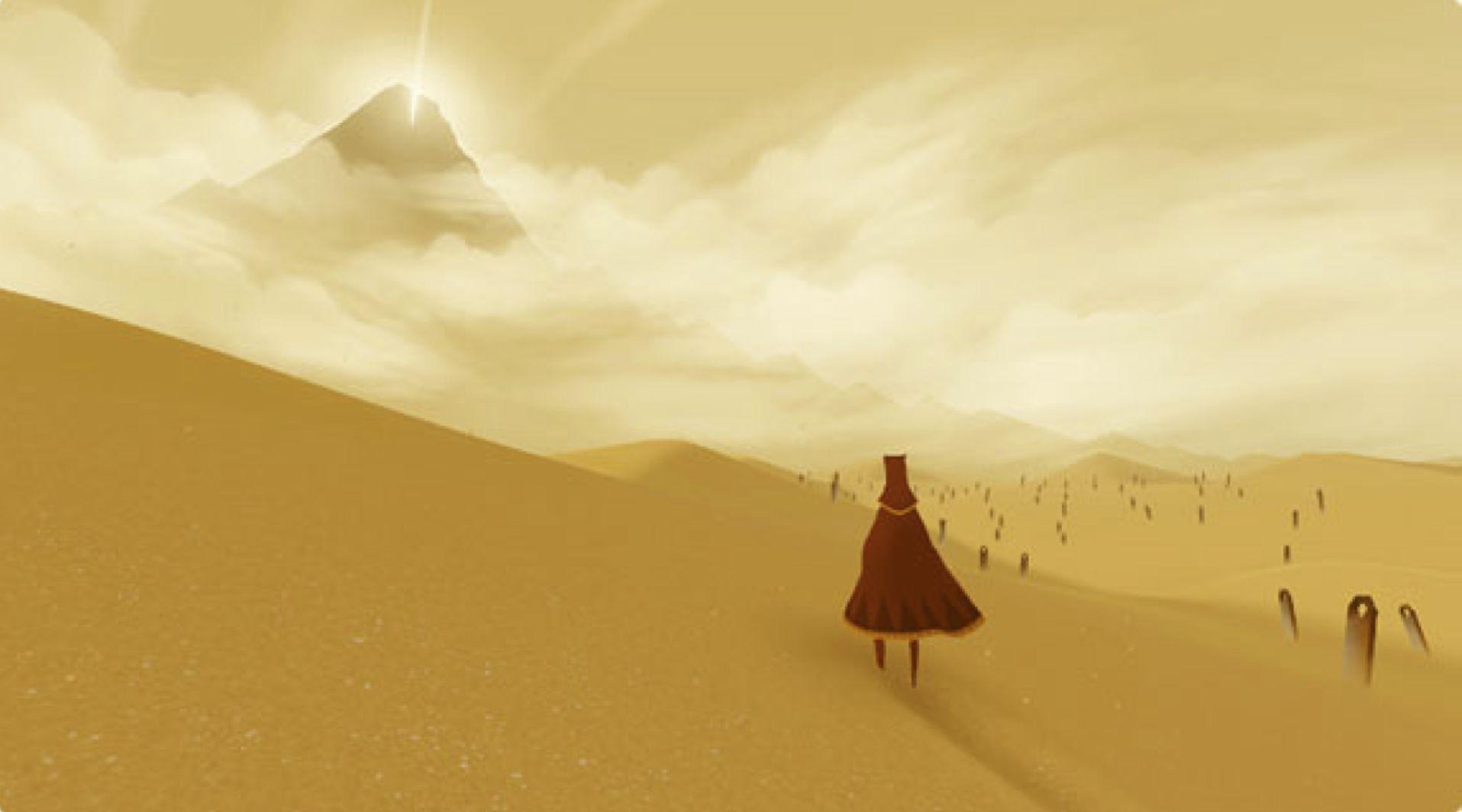Overview:
Journey is a digital game developed by Thatgamecompany and was published in 2012. While it was initially intended for PlayStation, it is now available on Steam for download on Windows, in addition to other platforms.
The game takes players on a spiritual journey to reach the peak of a distant mountain. The game is known for its minimalistic design and breathtaking visuals. Players take on the role of a robed figure who travels across a vast and mysterious desert landscape to reach the mountain. I read a quote once about how certain things can make you nostalgic for something you have never experienced, and that was precisely what I felt playing Journey.
One of the impressive aspects of Journey is its ability to convey emotion and storytelling without any dialogue or text. The game’s stunning visuals and sound design provide a sense of awe and wonder that is brilliant. Players are drawn into a world that is both beautiful and haunting, and the game’s mechanics reinforce this sense of otherworldliness.
The mechanics of Journey are simple but effective, with players primarily using arrows or a mouse in addition to the WASD keys to move in the game, with particular actions (yell/fly) done using the space bar or control button. The game’s motion is incredibly smooth, natural, and intuitive.
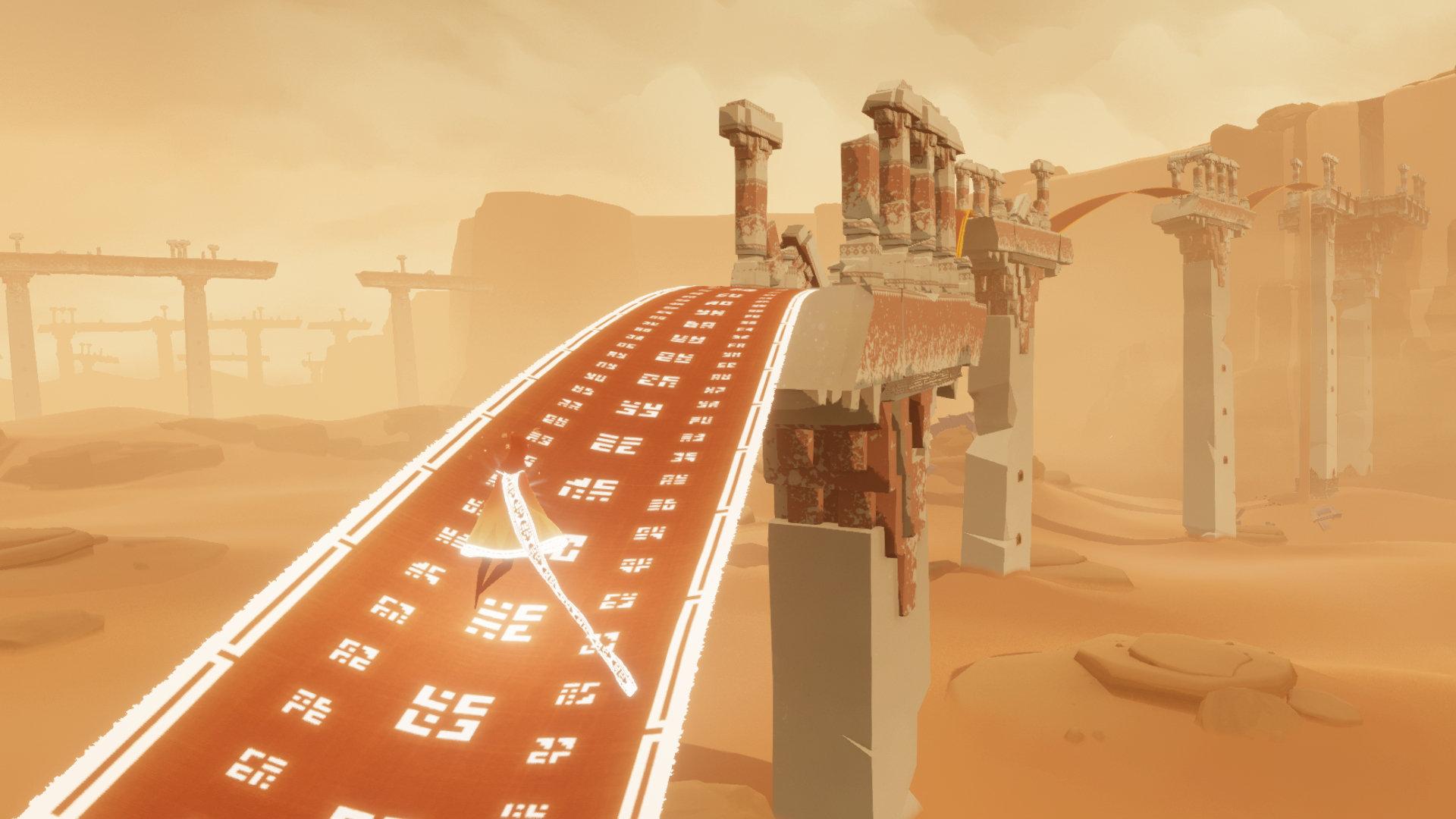
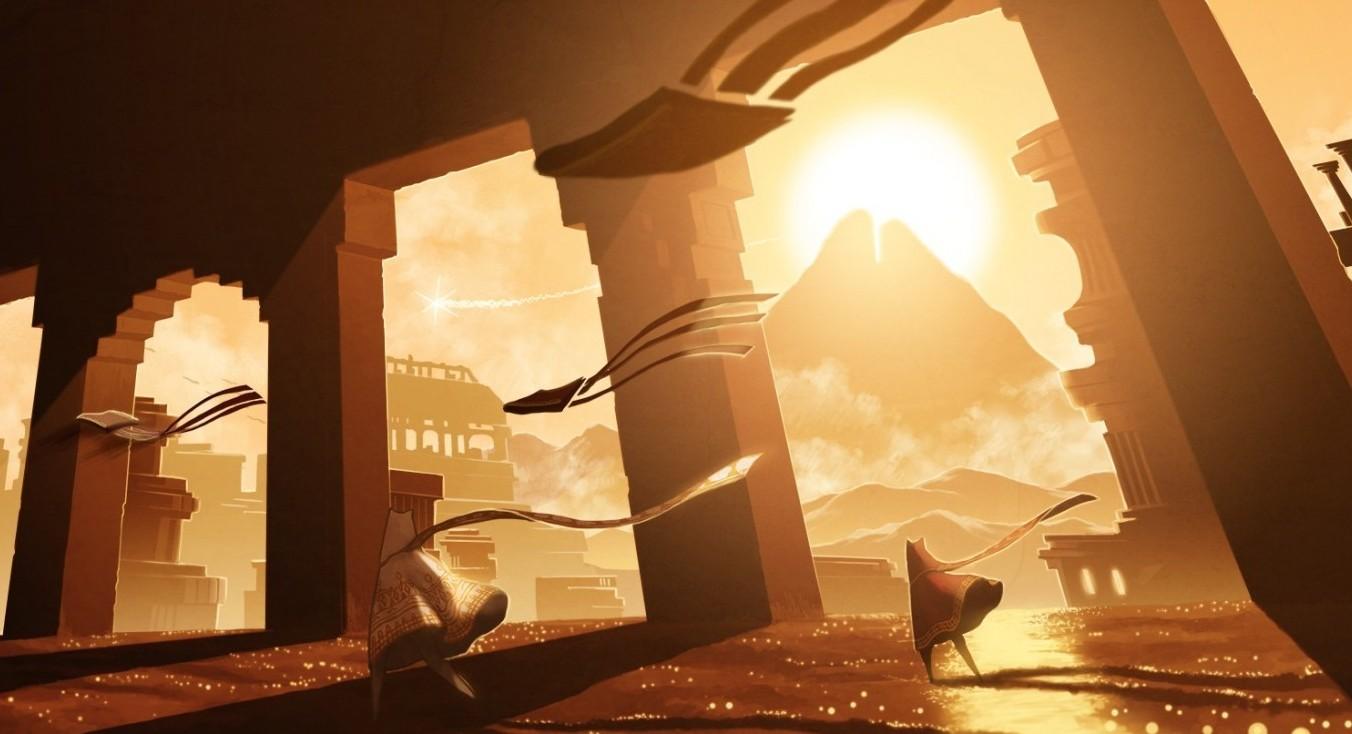
Formal Elements:
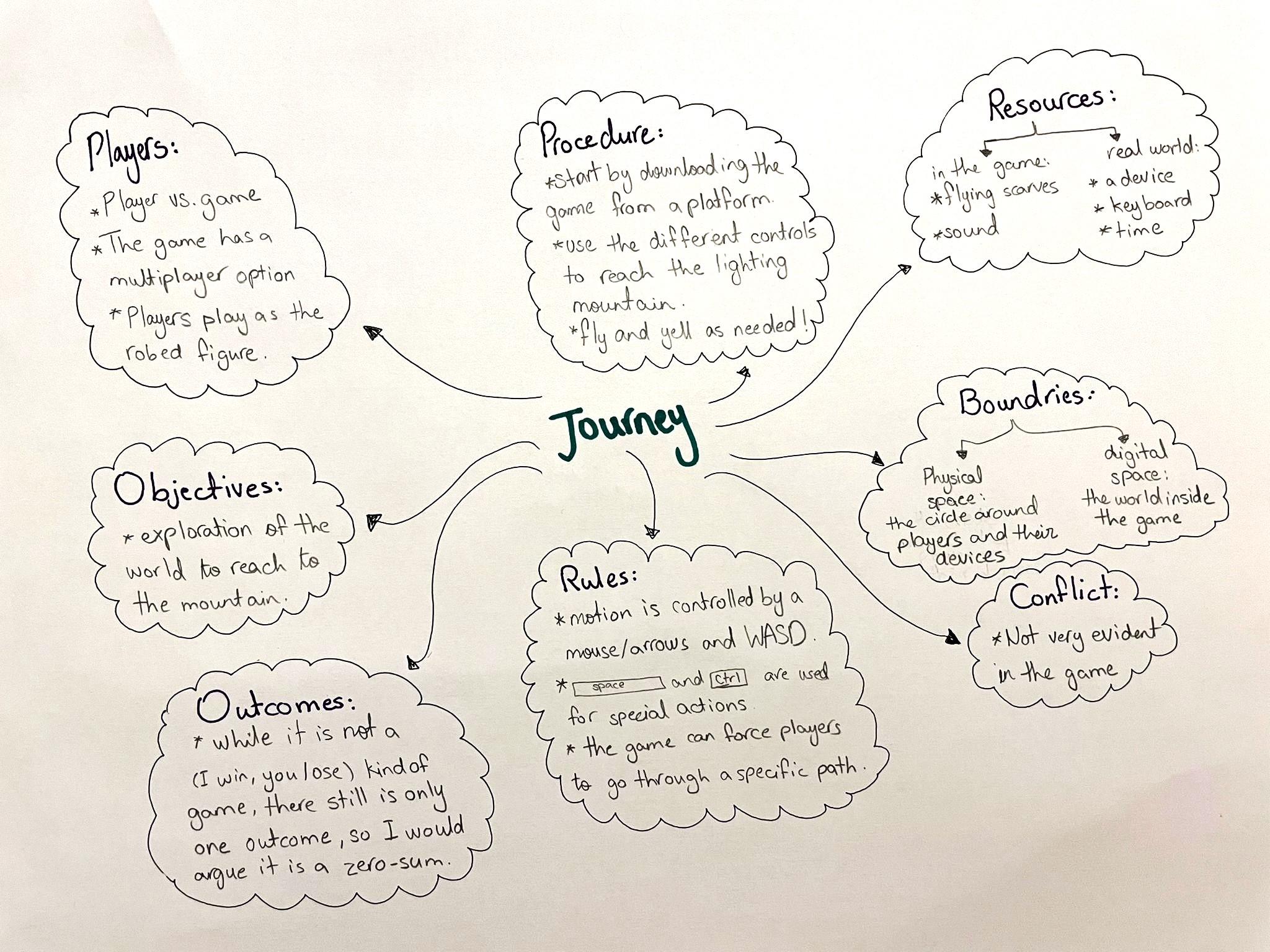
Target Audience:
While the game does not have any explicit age rating, it seems generally suitable for players of all ages. The game’s simple controls and lack of violence make it accessible to young players, while its emotional premise and aesthetics make it appealing to adults as well. Furthermore, the game’s lack of dialogue makes it accessible to players of all languages. Finally, the game has a multiplayer mode, which also makes it work for friends and couple that are in long distance relationships.
Types of fun:
Journey offers 2 main types of fun; discovery and narrative, with discovery being more evident. Players discover this world in the game as they move between “shrines” to perform a ritual in each one. In some of these shrines, the game switched to a 2D mode where a narrative is uncovering. These two types of fun work together well to make the game exciting yet cohesive.
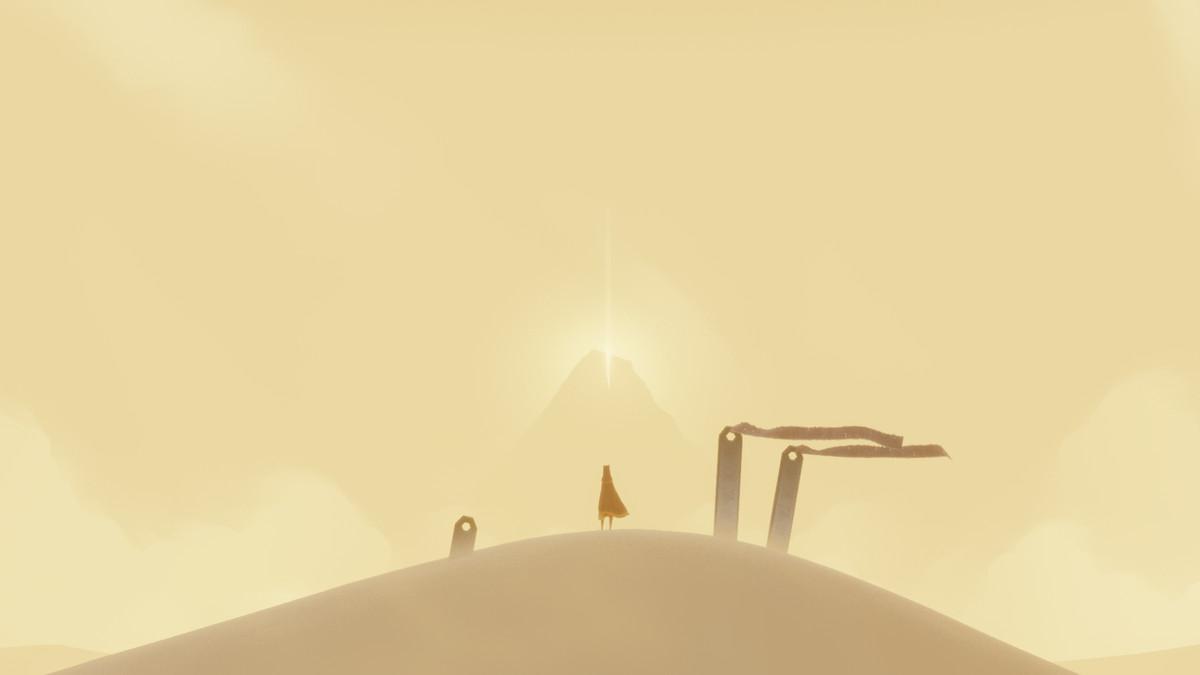
Success and fails:
One of the game’s most memorable moments is the first time the player is able to fly, or “long jump,” which feels incredibly majestic and adds a sense of freedom and exploration to the game. This sense of exploration is reinforced by the game’s expansive world, which never feels overwhelming or confusing.
Another MAJOR success is the visuals. The game is just so aesthetically pleasing, and the feelings it was able to evoke in me are beautiful. I have nothing but admiration for the designers behind the game.
I would not call this a failure, but at some point, I had to go through a valley. I tried to outsmart the game by heading to the surrounding mountains instead to avoid the valley, but I was forced down when the wind pushed me down the valley.
Improvements:
While the visuals were stunning, the accompanying audio somewhat did not match that. The game does not have any dialogue, so working more on the audio component would elevate the experience for players.
Also, I watched different walkthroughs for the game, and it seems like Journey is a game you play once. I think it would be more interesting if different journeys were added to the game, where a player’s decisions could lead them on a different path.
Final reflection:
I have always been interested in games, yet I was always frustrated when playing. I have arguably one of the worst mind-body coordination out there; I can not handle the stress. For the longest time, my way to enjoy video games was watching someone else playing (which still kept me on the edge of my seat). Whether or not hardcore gamers approve of walking simulations or not, I am thankful for this genre. I want to play games to feel something new, to witness beauty, perhaps, and that was exactly how it felt playing Journey.


